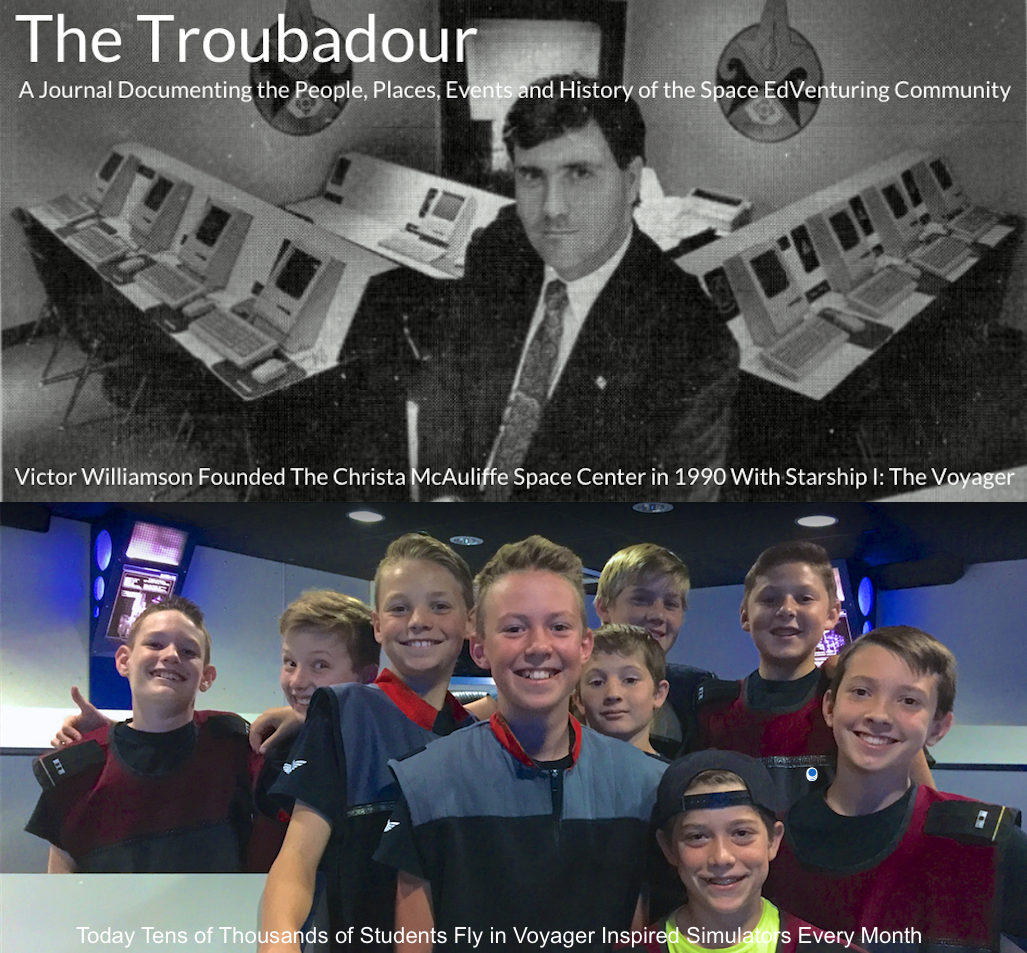 |
| The Everest at the Discovery Space Center, Canyon Grove Academy, Pleasant Grove |
Hello Troops,
Colonial Command's Starship Everest was ordered to Space Dock for a bridge refit. Command gave the engineers and workmen two days to complete the work before the Everest would be needed again in the far reaches of space protecting Earth from those who wish us harm. Starbase One's Engineering Chief laughed when told of the two day deadline. "We aren't in the miracle business," the chief explained. "Thinking we can do a bridge refit in two days is laughable." He walked away and disappeared into the break room for a sandwich and a cup of coffee.
"We're up for a challenge." A young engineer spoke up from a nearby toolbox.
"What's your name?" I asked.
He pulled another engineering from the insides of a damaged antigrav plate before answering. "My name's Mason and this is Bronson and we're up for a challenge."
"You can do a bridge refit in two days?"
"Yes. Just watch. And be sure it makes the blog." I agreed their monumental achievement would be documented on The Troubadour for all to read. And with that, they got to work.
Two days later I returned for the inspection.
1. They painted the Everest's ceiling black. The USS Voyager, the mother ship of all simulators, had a black ceiling.
2. They painted a two color band, seen behind Mason in the photo above, around the base of the once all white walls Mason cleaned himself up for the photo and put on his favorite bowtie. He was leary of the wetpaint but I insisted on a shot of him on one of the two newly installed raised platforms.
 |
| Two new platforms were installed and illuminated with rope lighting |
Mr. W.
Space News
By Mark Daymont
Spacerubble.blogspot.com
ISS Now at 5 Docked Spacecraft
It has been a busy July at the International Space Station, with one ship leaving and three ships arriving. It started at the beginning of July with the undocking of Progress M-62 from the Pirs module. Also designated Progress spacecraft MS-1, it was the first Progress mission using the new MS series of cargo ships. After undocking, engineers performed computer and navigation exercises with the craft to test the new systems which are also found on Soyuz spacecraft. Progress 62 was deorbited and burnt up in re-entry the next day.
Then on July 7, Soyuz MS-01 lifted off from Baikonur with the remaining crew of Expedition 48. This Soyuz was the first of the new, and ultimate, Soyuz space capsule modifications. It docked with the ISS on July 9 at the Rassvet module. These two flights were reported earlier this month.
The next two flights were unmanned cargo space missions. Uniquely, this was the first time that two robotic spacecraft were in pursuit of the ISS at the same time, and actually docked within a day and a half of each other. First came the Russians.
Progress 64 (NASA designation) is the third of the new Progress MS vehicles (Russian designation MS-03), and was launched on July 16th. It docked at the open Pirs module on July 19th, taking the "Long Route" 2-day orbital chase to give engineers more test flight time, rather than fly the now normal 6 hour flight path.
Gotcha! Dragon is captured with the robotic arm.
The latest to arrive is the Dragon, mission CRS-9. It was launched by SpaceX from Cape Canaveral at pad LC-40 on July 18th. It docked at the US-built Harmony module on July 19. Significantly, it carries some important medical experiments, and especially the new Spacedock adaptor which will enable other spacecraft with the adapter standard to dock at the same port.
That made for 3 spacecraft dockings within 11 days, a very good achievement for the crew of Expedition 48!
50 Years Ago: Gemini 10 Docks in Space
Fifty years ago on July 18, 1966, astronauts John Young and Michael Collins took off for another NASA attempt at docking with the Agena target vehicle. On two prior missions, there had been problems with the Agena docking vehicles, sometimes due to errors in launch, and recently when the payload shroud failed to separate from the target dock. On this flight, things went much better. The Agena was blasted into space more than an hour before the Gemini-Titan rocket took off. It successfully deployed in orbit and awaited the Gemini capsule.
Gemini 10 took off from Launch Complex 19 at about 3 in the afternoon into clear skies. During launch, it seems that one of the umbilical hoses from the launch tower came loose and clung to the Titan's second stage. It appeared to pose no trouble during the remaining flight. The capsule reached an altitude of 159 miles. Their first goal was to reach the Gemini 10 Agena target. Using fuel in the service module, they made up the 970 miles separating them, and docked with the Agena the next day (July 19th). For the first EVA of the mission, Collins opened his hatch and began photography experiments. One item pictured was a color patch on the capsule, which engineers would use to resolve color imaging issues for space photography. He also made some ultraviolet images of the Milky Way. The EVA was cut short when both astronauts experienced severe eye irritation. Some lithium hydroxide had leaked into their ventilation system. After closing the hatch the air system was purged and the problem solved.
They next used the fuel in the Agena to boost their orbit higher, until they had reached more than 40 miles higher. This was the highest altitude reached by astronauts so far. Their goal was to reach another space vehicle - this time the Gemini 8 Agena target, which had lost power and was floating dead in in space. It was the original Agena that had been involved in the first docking in space on Gemini 8, just moments before a malfunction in the Gemini 8 thruster system caused the two docked vehicles to spin dangerously. To save their lives, Neil Armstrong and Dave Scott had forced an emergency separation from the Agena and then completed gaining control of their capsule and landing early in the Pacific Ocean. Now, Young and Collins found the Agena orbiting in a stable position and ready for the second part of the mission. For this rendezvous, they jettisoned the original Agena and approached the Agena (8) with their own thruster system.
Collins performed the second EVA, exiting the Gemini capsule and floating the short distance to the Agena vehicle, where he retrieved a micrometeorite collection shield. The hand-held maneuvering unit helped him orient himself, but there were no handholds on the Agena in those days, so working around the Agena was difficult. After returning to the capsule, there were problems with the umbilical cord and so before closing the hatch, it was jettisoned along with the EVA chestpack. Ten other science experiments were performed by the astronauts during the mission. On July 21st, they deorbited and re-entered the atmosphere, landing 3 miles from the recovery ship USS Guadalcanal.
For Command Pilot John Young, this was his second spaceflight, having originally flown with Gus Grissom on the first Gemini manned flight. He would go on to ave the longest career of any astronaut, and eventually became the only person to fly four different spacecraft type: Gemini, Apollo Command Module, Apollo Lunar Module, and the Space Shuttle. This was Michael Collins' first space mission, and he would go on to fly on the historic Apollo 11 mission. For a time, the capsule of Gemini 10 was on display in Norway, but is now home in the USA at the Kansas Cosmosphere and Space Center.
John Young on the left, Michael Collins on the right.
Beautiful Atlas V Launch
There are so many rocket launches around the world these days that I primarily like to cover the manned mission variety. But some launches just catch my eye, like this one. Atlas and ULA just keep a busy pace with successful satellite launches from Cape Canaveral. This one lifts off on a beautiful Thursday into the Florida sky, the 64th launch of the Atlas V rocket and the 135th of the Atlas program.
The National Reconnaissance Office (NRO) maintains the supervision of our country's fleet of satellites that monitor security situations around the world, especially keeping an eye on those countries that are hostile to America. For the United Launch Alliance, the company that manages many of the satellite launches (and previously, shuttle launches), this flight was the 23rd launch for the NRO. The NRO has also used Delta rockets for some of its missions.
You can read more about this satellite at NASASpaceflight.com at:https://www.nasaspaceflight.com/2016/07/atlas-v-launch-nrol-61-reconnaissance-satellite/
See more great launch photos at SpaceFlight Now:http://spaceflightnow.com/2016/07/28/photos-more-shots-of-thursdays-atlas-5-rocket-launch/

















































































































































































































No comments:
Post a Comment